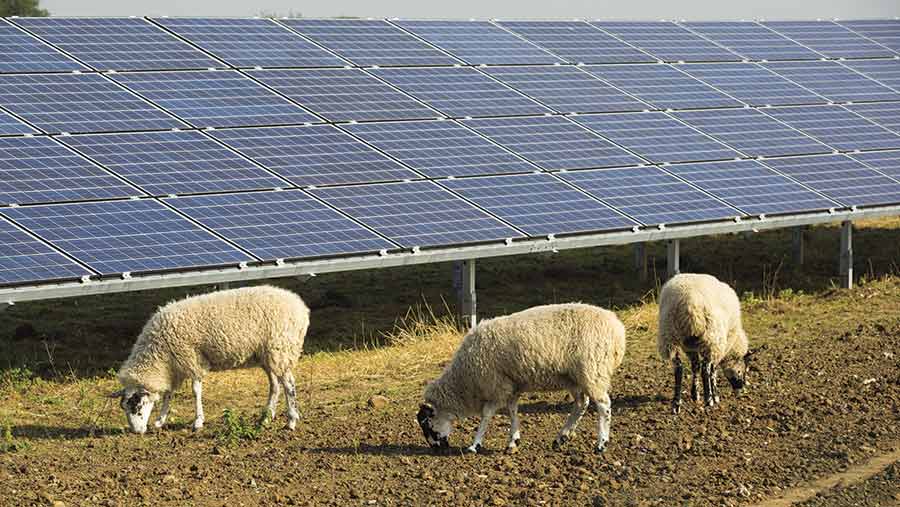How to avoid the tax traps of farm diversifications
 © FLPA/Rex/Shutterstock
© FLPA/Rex/Shutterstock The tax considerations of diversification are wide ranging and it is very important that the correct structure is chosen from the outset.
The simplest approach may be to include the diversification project within the current farming business, says Lisa Oliver, associate director at accountants Hazlewoods.
“The main advantage of this is simplicity, as all income and expenses will go through the existing farming partnership under one VAT registration, with no need for a further set of accounts.”
However, depending on the nature of the diversification activities, this may not be the right route.
See also: Business Clinic – tax advice for holiday let barn conversion
“If the farming business is VAT registered and the diversification project results in standard rated supplies – for example, a glamping site on the farm – all input VAT on the set-up and running costs will be recoverable.
“The main disadvantage of this structure is that, regardless of the turnover relating to the diversification project, output VAT will need to be charged at 20% on the fees. This will be an added cost to the business if customers are not able to recover this VAT.”
Set up as a separate entity
If the initial turnover of the new project is likely to be below the compulsory VAT registration threshold of £85,000/year, then it may be beneficial to set up as a separate trading entity – if it is not VAT registered then VAT will not have to be charged to customers, says Ms Oliver.
The separate entity could be a sole trade, partnership or a limited company, depending on the taxable income of the business owners, the anticipated project profits and the amount of capital tied up in the business.
“Provided certain criteria are met, an additional annual investment allowance (AIA) of £200,000/year could be available for the new entity, which may be beneficial if the current farming business is likely to use its AIA.”
A separate entity would also provide the opportunity for other family members or third parties to be involved in running the business separately from the farm.
If all farm partners are higher-rate tax payers and the profits from the diversification project are likely to be reinvested in the business rather than being drawn, then it may be beneficial for the new project to trade as a limited company.
All profits would be taxable at 19% and there would be no national insurance costs.
A further advantage of a limited company is that it provides financial protection for the owners.
“The disadvantages of setting up a separate, non-VAT-registered entity would be the extra administration, such as separate accounting records, a different bank account and an additional set of accounts. Also, input VAT would not be recoverable on the initial set-up and running costs.”
Inheritance tax
Among the most important long-term considerations is the potential effect of diversification on inheritance tax (IHT) reliefs.
Introducing a new non-agricultural use of land or buildings takes those assets out of farming and so out of the scope of the valuable agricultural property relief (APR), which gives 100% relief from IHT provided certain conditions are fulfilled.
“If you diversify too much, you can cease to be a farmer for tax purposes and so could lose APR on the farmhouse, although, of course, you still get business property relief [BPR],” says Catherine Whittles of solicitor Bowcock and Pursaill.
Income test
There is also the risk that some alternative enterprises may be viewed by HMRC as non-trading and more as an investment business. “There is a strict 50% income test for this – fail and you will also lose BPR.”
With this in mind, watch out for the level of activities that require mainly the use of the land – for example, caravan sites, vehicle storage and workshop space – where the activity may be viewed mainly as letting, advises Ms Whittles. “Keep horses to minimum and to specific areas as they are not agriculture.”
Stewardship and or forestry schemes should be considered agriculture, but HMRC will give specific guidance and clear this where appropriate.
Renewable energy
There has been much debate about whether the use of land for solar panels takes it out of agriculture and therefore outside the scope of APR.
“There is no clear case on whether diversification [solar and sheep] would remove APR,” says Ms Whittles.
“It will mainly be down to degree of profit obtained, time employed, capital invested as to whether APR will or will not be restricted.
“A reasonable solar farm, where profit is paid to the farm and where the farm actively farms the land and the accounts show purchase of kit/feed/fuel etc and market sales would be considered to still be trading, so the farming element would be enough to protect the farmhouse.
“The solar project would be a BPR asset. The land would still attract APR, any difference in value would be due to the solar BPR asset of the farm.”
Other considerations
Income tax – If the current business trades as a sole trade or partnership and the new project is a limited company, sideways loss relief would not be applicable. If the current business makes a taxable loss this will have to be carried forward against future farming profits, and any profits in the company would be taxable and suffer tax at the rate of corporation tax (19% for 2017-18).
Capital gains tax – If the diversification project increases the value of land and/or buildings, the ownership of these assets should be considered. Gifting to the next generation while still in agricultural use may be appropriate so gift holdover relief can be claimed.
